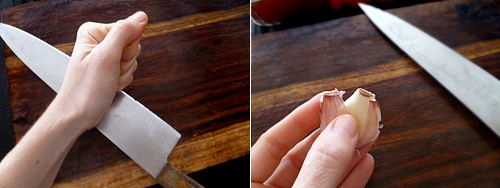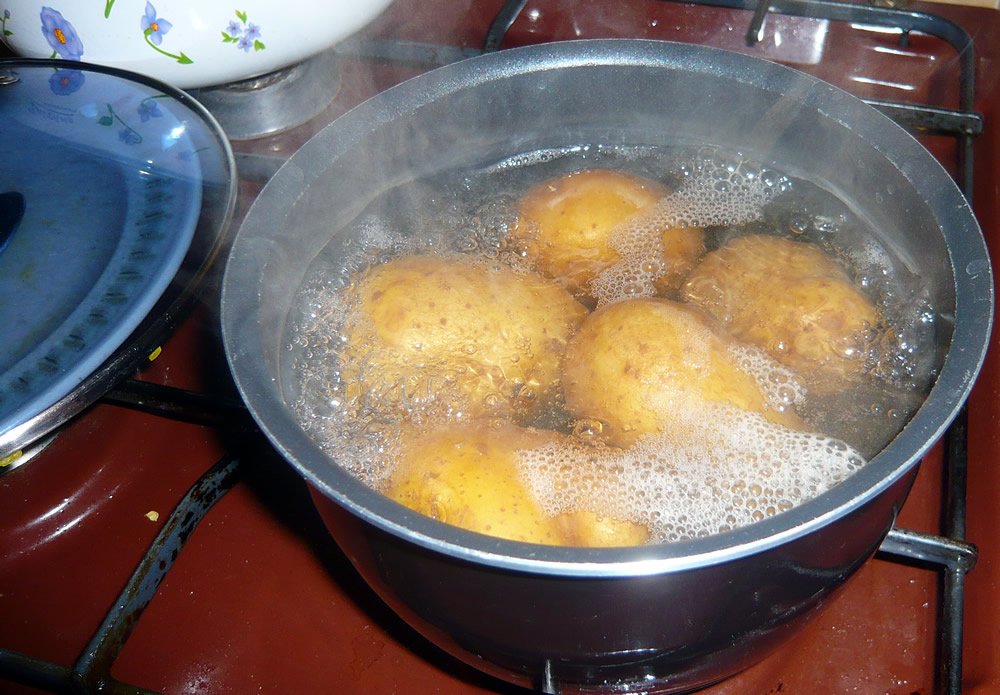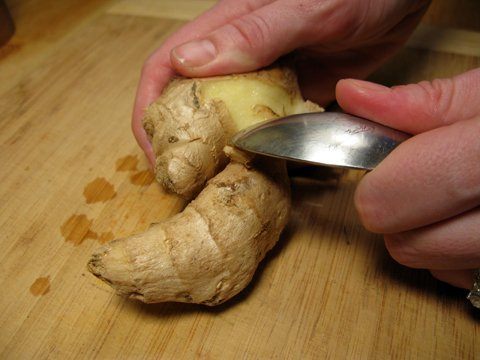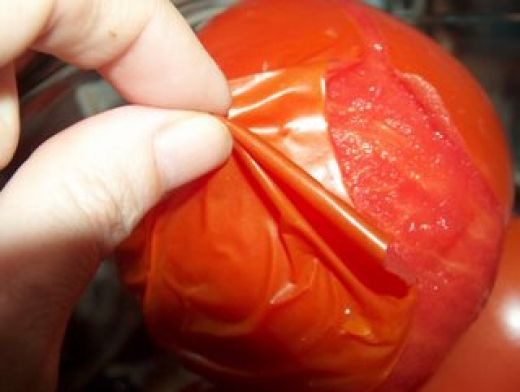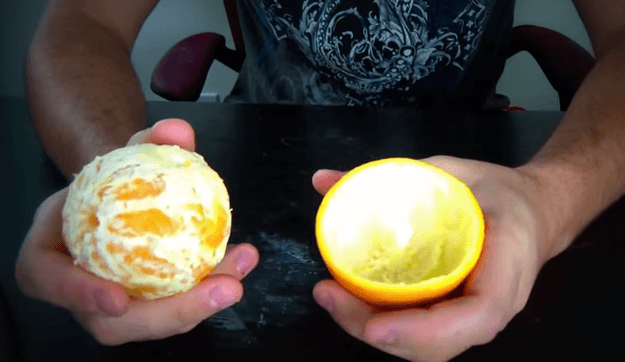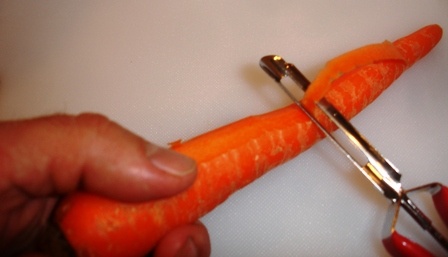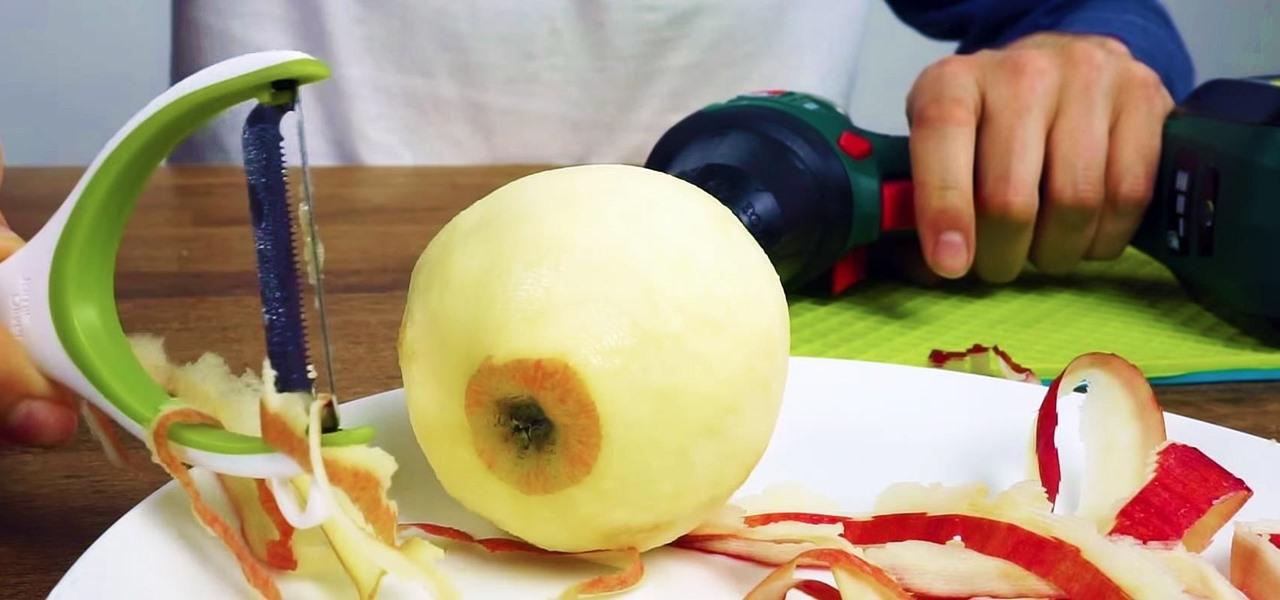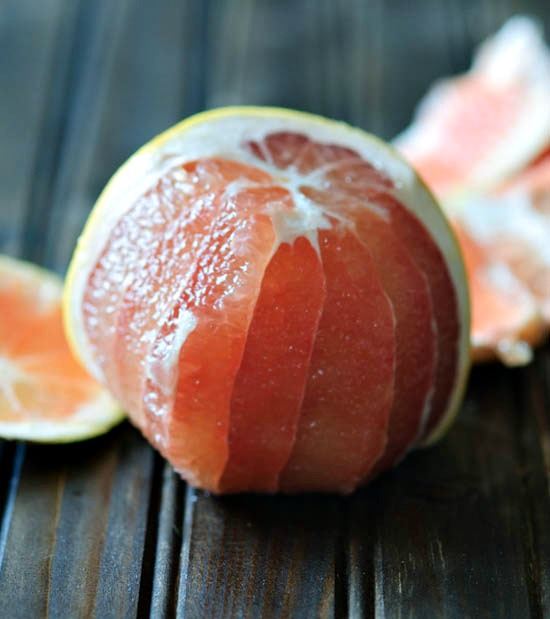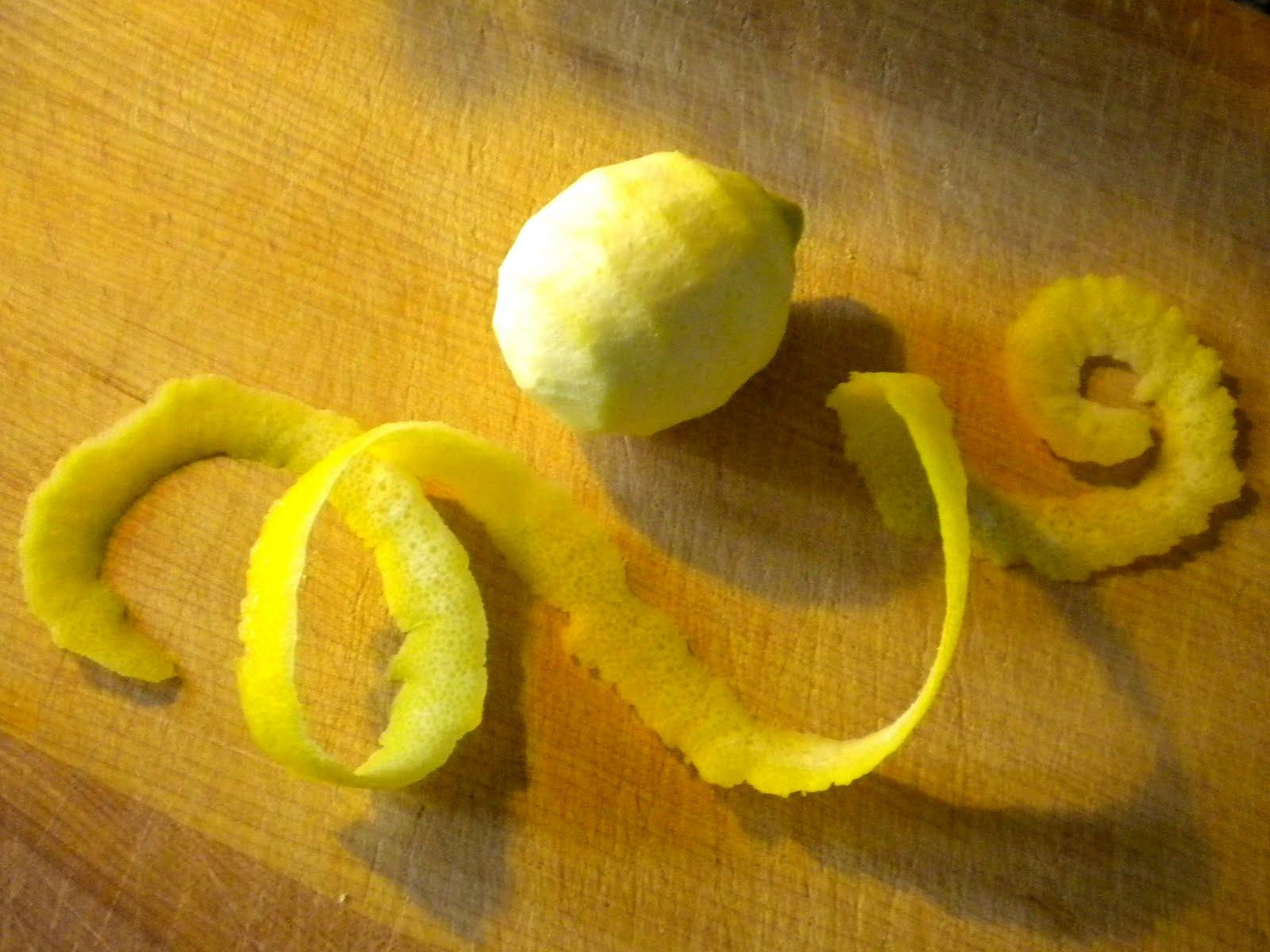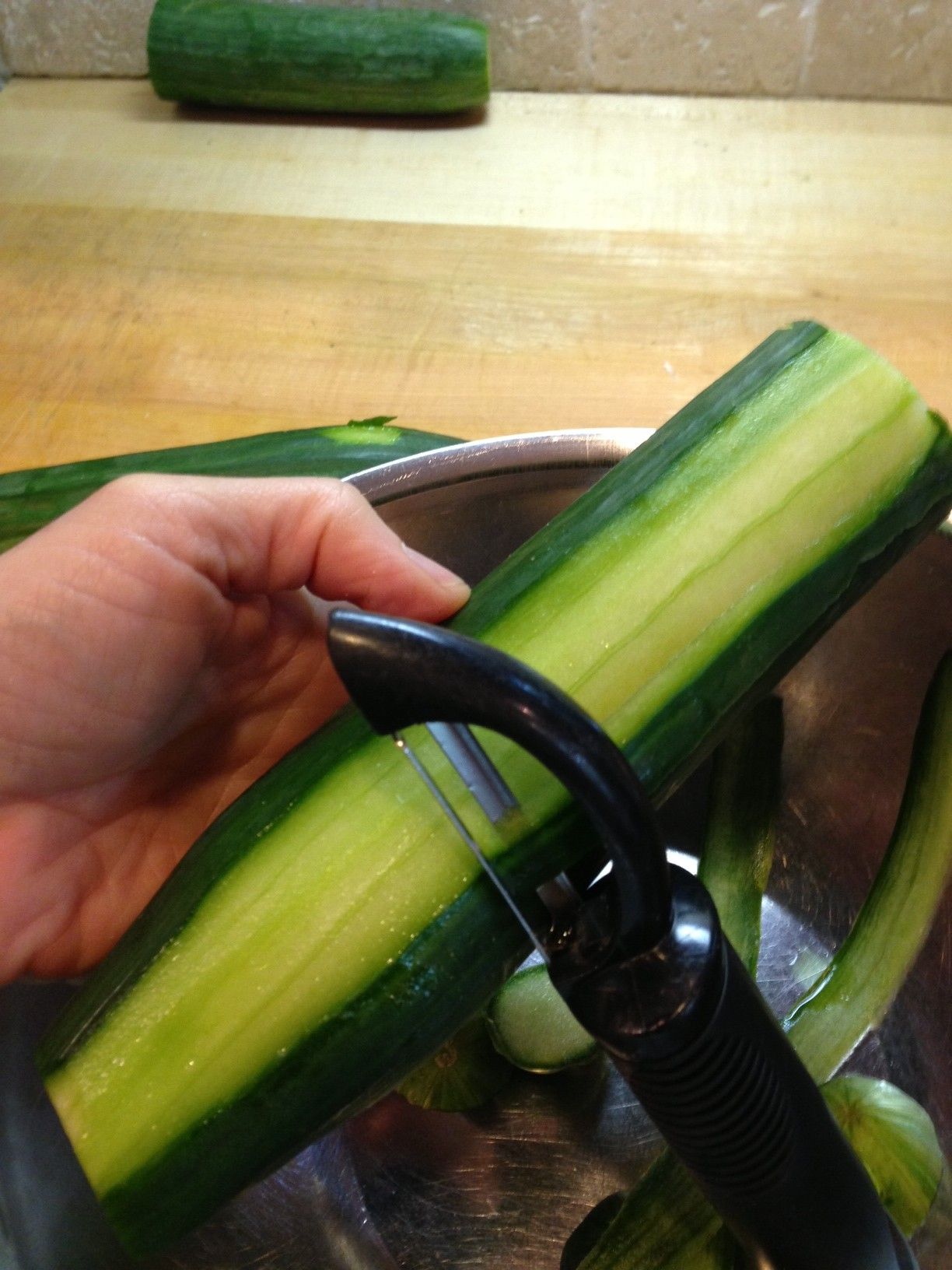Peeling fruits, vegetables, and even meat (from their skin or scales, the case of fishes) takes a lot of skill, and a requirement if you’re looking to work in the culinary industry. To peel quickly is to prepare food with haste, and the less time you spend holding a knife, the less likely you are to hurt yourself. So, regardless if you’re a stay at home mom, an aspiring culinary master, or just someone looking to help out at Thanksgiving, here are some quick peeling hacks that will enable you to skin everything in less than a minute (or two):
Onions – it can make you cry
This spice is one of the most used in the world, and it is a regular in everyday cooking. Burgers, pizzas, salads and other home-cooked meals would be flavorless without it. Regardless if you’re peeling a red, white or yellow onion, here’s a quick way to peel it WITHOUT having to cry:
1. Slicing Vertically
First off, cut the onion vertically, and place the flat side of the halves on the chopping board. Cut off the root and the unusable parts of the onion. Make sure not to cut off any good parts! Peel the outer layer of each half with your hands.
2. Heating it
Cut it vertically in half, and remove the unusable parts. Stab it with a barbecue stick or a fork. Preheat a teflon frying pan and hold the against the side of the frying pan. Peel it with your hands (wait for it to cool off to bearable levels).
Tips:
Wear swimming goggles if you’re slicing a large amount of onions. Doing so will prevent you from crying. Refrigerate the onions before slicing them up, and do so when they’re still cold. This will slow down the release of the chemical responsible for making you cry. Wrap your hands with plastic gloves to prevent them from smelling like onions.
Garlic – good for the heart, hard to peel in the kitchen
Like onions, garlic is one of the most widely used spice in the culinary field, which is why peeling it quickly is important: if you’re an aspiring cook or chef, you’re likely going to tackle garlic in every dish you make. Numerous studies have proven that it is good for the heart, but peeling can increase your blood pressure: other than peeling it the outer skin, you need to peel the cloves too. So, let’s cut to the chase and learn the best methods:
The 20 Second Method
Set the bulb against the counter, with the tip of the shoot facing up. Make sure the counter is firm and in good condition. Strike the bulb with the heel of your palm – this will break off all of the bulbs easily. Place the bulbs inside a metal or ceramic container. Close it tightly. Shake the container like your life depended on it for 15 seconds. Open the container and you’ll see fully or partially peeled cloves.
This method is perfect if you’re peeling garlic en masse, like if you’re cooking for an army, for example.
The Flat Knife Method
After separating the cloves, put an unpeeled one on the surface of a chopping board. Hold a flat knife over it. Quickly smash the surface of the knife with your palm. Don’t apply too much force: just do it swiftly and carefully. Remove the rest of the peel by hand.
Boiled eggs – peeling the hard shell
Boiled eggs, regardless if they’re hard boiled or soft-boiled, are a mainstay in everyday cuisine. Rich in nutrients particularly protein, it is relatively simple and quick to make, compared to other egg-related dishes. However, peeling it can be quite a chore, especially if you’re in a rush. So, what is the quickest way to peel it?
Blowing Method
When the eggs are cool enough to handle, remove parts of the shell on the top and bottom of the egg. Make sure the lower hole is larger than the one on top. Blow the egg from the hole on the top, and the soft and edible interior will slide down effortlessly!
Rather than putting salt, vinegar or baking soda on the water during the boiling process, just resort to this method. It takes less than 10 seconds: just make sure you’re the one eating the eggs though.
Potato – peeling the thin, brown skin
There are a ton of reasons why you would want to peel a potato quickly, though primary reasons are always for french fries and mashed potatoes. Although there’s a tutorial video which depicts a whole bag being peeled in under 60 seconds, handling a drill and a power hose at the same time can be dangerous, so there’s no way we’re going to recommend it.
The hot and cold water method
Use a knife to slice the potato skin lengthwise. Be sure not to cut the insides – only the skin. Put it in a pot of boiling water for at least 10-20 seconds. After which, use a ladle to transfer the potato into a put filled with COLD water. Let it stay for at least 10 seconds. Peel the potato/es using your hands with ease. You can easily peel a dozen of them within five minutes!
Ginger – a fragrant, healthy but hard to peel spice
Tomatoes – peeling them for pasta, sauces or salads
Hot and cold water method
After removing all of the inedible parts of the fruit, cut a shallow X on the bottom of it, or slice it thinly (be careful not to cut the red, juicy flesh). Prepare a pot of boiling water and put the tomato inside it. After 30 seconds or if you see signs of peeling, immediately remove the fruit from the scalding hot water via a ladle. Prepare a pot of ice cold water and submerge the fruit for at least 30 seconds. Remove the skin effortlessly. This hack applies to all types of tomatoes, from roma to cherry.
Oranges – peeling them is irritatingly hard
Arguably one of the most consumed fruit around the world, this citrus is filled with vitamin C and fiber: consuming one everyday – whether in raw or in juice form – will work wonders for your health in the long run. However, peeling it takes a lot of time, and it’s likely to put you in a fit of rage during the whole process. However, what if we told you that you’ve been peeling them wrong (especially if you’ve been doing so with your hands) in your whole life?
The right method to peel oranges
First off, get a knife and form a groove in the center of the fruit. Be sure not to reach the fleshy and juicy insides. Insert thumb inside the groove and immediately remove the peel. Voila, a peeled orange.
Carrots – peeling them like a pro
Doing it like a chef
First off, get a double bladed vegetable peeler. Hold the carrot with the point side down on a 45 degree angle. Peel the carrot downward, starting from the middle. After you’ve reached the tip, rotate and start peeling upward. When you’ve reached the top, rotate and peel downward again. Repeat the last two steps and you’ll have a peeled carrot in less than 20 seconds.
Apples – peeling dozens in less than five minutes
The drill method
First off, get a handheld, battery operated drill. Be sure that the drill tip is new, clean, disinfected, sterilized (if you’re going to go that far) and free of rust. Thrust the drill tip into the core of the apple. Insert it through the top. As soon as the apple is securely in place, turn on the drill. Hold a vegetable peeler against the hold you’ll see the skin get peeled off effortlessly.
By doing this, it takes three seconds to peel a single apple. However, be sure to have a large working surface since it can get a bit messy.
Grapes – skinning them effortlessly
There’s no shortcut to peeling grapes – you still have to skin them individually. However, removing the skin can be quite a chore, considering that parts of it may remain. Here’s how to avoid situations like these:
Prepare a pot of boiling water. Put the grapes in a handheld strainer and submerge them in it. After four seconds. transfer the grapes into the pot containing ice water. Let them stay of 10 seconds. Peel the skin off with minimal effort.
Grapefruit – no need to use the serrated spoon
Cut slice the top and bottom parts of the grapefruit, enough to expose the flesh of the fruit. Start slicing off the peel, starting from the top and bottom. Carefully follow the curve of the fruit without sacrificing too much of the flesh. Enjoy the fleshy insides!
Lemons – life loves giving you this fruit
Whenever life gives you lemons, you make them useful and edible. This sweet/sour fruit can be used in a lot of ways: as a juice, a supplement to a drink (like in tea) and can be eaten raw as well. Section peeling it is very basic, but it can take you a bit of time to finish it. Anyway. here’s the quickest way to peel it:
The spiral peeling method
First off, cut both ends of the lemon (top and bottom) with a sharp chef’s knife. Hold the lemon with your less dominant hand. Get a paring knife and position it on the top end (the one you just cut). Cut the peel carefully in a spiral motion, from top to bottom. Don’t stop or cut off the spiraling peel until you’ve cut it all.
Instead of throwing the peel away, you can use it as a garnish, air freshener and even as a spice (lemon zest).
Pineapples – possibly the toughest fruit to peel
If you manage to peel a pineapple in less than a minute, then you’re obviously skilled with a knife – not everyone can do that. Although there’s this vendor who can peel and slice it in less than a minute (take notes and be amazed chefs). Be armed with an insanely sharp blade and do what he did.
Eggplants – quick tip
This fruit, though cooked as a vegetable, is pretty versatile and can be cooked in a lot of ways. This dark, purple fruit is consumed worldwide and can be found in almost any cuisine. Though you may elect to keep the skin intact, it is much softer (and tastier) if you remove the peel. Here’s a quick way to do so:
First off, cut the cup and the stem with a sharp chef’s knife. Like how you peeled the carrot, hold the eggplant 45 degrees downward and start peeling. Use a vegetable peeler.
This method takes at least a minute – unless if you have really fast hands.
Mangoes – peeling it in under 10 seconds
First off, slice the mango into three. Put aside the seed in the middle (eat it later) and place the two fleshy thirds in front of you. Take the empty glass and thrust it into the bottom part of one of the fleshy thirds. Thrust it all the way into the top and voila, a peeled mango!
Keep in mind though, things can get pretty messy, so be sure to do this on top of a chopping board with paper towels at the ready.
Coconuts – bashing the shell
Put the coconut on the freezer for 12 hours or overnight. After which, place it on a hard surface and use and get a hammer. Lightly smash the coconut in order to put cracks on the shell. Once the pieces fall off, you’ll notice that the meat does not stick to the shell. Remove the remnants of the shell and all you’ll have is the circular ball of coconut meat.
This process takes 30 seconds (12 hours and 30 seconds if you count the time in the freezer), and it’s much more productive and effortless than resorting to other methods. If you need to see a video showing it, here’s a link.
Avocado – removing the skin
First off, cut the avocado LENGTHWISE, rather than cutting it around the width (or the equator). Do NOT slice it in half since it will be impossible to remove the seed. Be sure to avoid slicing the seed or pit off. Go around it and you will be able to separate both halves with your fingers. Give the pit a soft whack with the knife, twist it and pull it out. It should come out without effort. Grab a spoon and scoop out the flesh.
Cucumbers – peeling and seeding it
Cut both ends of the cucumber (top and bottom). Slice it in half lengthwise. Remove the seeds with a spoon. Use either a paring knife or a vegetable peeler to scrape off the skin. Be sure to point it away from you!
Shrimp – peeling the shell off
Seafood is a favorite in coastal areas and a mainstay in Cajun cuisine. Peeling shrimps can be bothersome, considering the degree of difficulty. It is best to remove the shell after it is cooked, considering that it makes it – and the dish – taste better with the shell intact. The fastest way to do so is via a two tined cooking fork. Here’s how:
First off, pull off the head or chop it off. Get the two tined fork and put one of the tines directly on the vein. Hold the shrimp in place and push it into the vein cavity. Pull the shell via the shrimp’s rear. It will come off effortlessly.
Salmon – skinning it
After deboning the salmon, place the fillet with the skin under it on a chopping board. You may want to sprinkle salt on the tail to prevent it from slipping. Hold the tail firmly. Cut between the flesh and the skin in the opposite direction from the tail end. While holding the end, continue to cut until you’ve fully separated the flesh from the skin.


